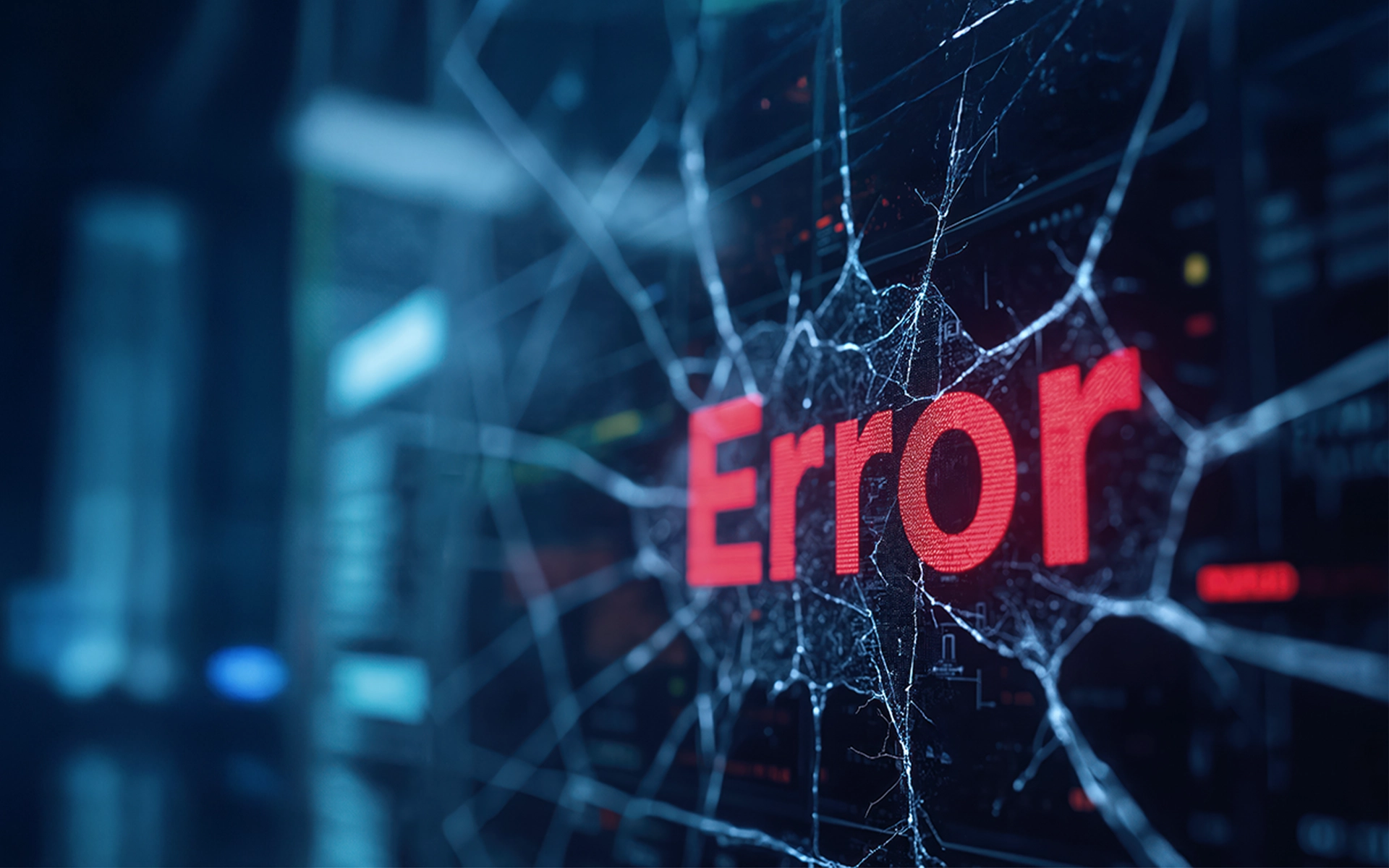Trusted by Industry Leaders
Helping You Ride the Storm
How an IT Disaster Recovery Plan Can See You Through
Businesses have never been more reliant on technology than they are today. And even the most robust IT systems are vulnerable to unexpected events - natural disasters, power outages, cyber attacks, and more. These disruptions can lead to lost productivity, financial losses, and even reputational damage.
That's where ADITS' Disaster Recovery Solutions come in.
We understand that you can't prevent every disaster, but you can be prepared to weather the storm. Our comprehensive disaster recovery services are designed to minimise downtime, protect your critical data, and ensure your business can quickly get back on its feet.

Ensure your business is resilient in the face of adversity
Our comprehensive disaster recovery plans (DRP) are designed to cover all potential threats, providing detailed guidance for a swift and efficient recovery process.
-
Comprehensive: Covers all potential disasters that your business could face.
-
Detailed: Detailed to enable for a swift and efficient recovery process.
-
Reliable: Regularly tested to ensure optimal performance and to minimise business downtime.
-
Up-to-date: Continuously updated to reflect changes in your business and industry.
-
Communicated: Clearly communicated to all employees, ensuring everyone knows their role in the recovery process.
-
Documented: Easy to understand and processes and are simple to follow.
-
Flexible: Adaptable to changes in your business environment.
-
Cost-effective: Quality-first solutions that work within your budget.
Sit Back and Relax
Let Us Take Care of the Tech Stuff
We get it - you don't want to get caught up in the technology weeds; you just want to know your business is operational, efficient, and secure. So, say hello to our team of experts, here to take care of your IT so you can focus on what you do best.
With years of experience in a variety of industries, we'll make sure your business is running smoothly and securely, without you having to worry about a thing.
Read What Our Client Have To SayADITS
One of the most memorable experiences with ADITS was during the North Queensland floods of 2019. We needed onsite assistance urgently and ADITS worked with us to get a technician here, even though the roads were closed.
Ensuring you're Always Covered
By choosing ADITS' Disaster Recovery Solutions, you're investing in the peace of mind of knowing your business is prepared for anything.
Our disaster recovery solutions will:
-
Identify Critical IT Systems
What IT systems are essential for your business to operate?
-
Assess the Risks
What are the potential threats that could disrupt your IT systems?
-
Develop an IT Recovery Plan
What are the steps to restoring your IT systems? Who is in charge of what? What technologies will be involved?
-
Keep Your Plan Up-to-Date
Your plan should be updated as your business grows or changes.
-
Test Your Plan
Make sure your plan works by testing it regularly.
CyberShield, Your Ultimate Business Protection.
Benefit from an all-in-one solution including managed IT, essential security controls and IT governance. Start adopting a cyber security- first approach today.
BUSINESS INSIGHTS WITHOUT THE TECH TALK
Discover More About Disaster Recovery Plans
In this episode, Adam Cliffe is joined by Simon Petie, Crisis Response and Business Resilience expert, who assisted most mainstream media in helping them understand one of the major technology outages in history - CrowdStrike. The pair discuss all things resilience, from responsibilities to preparedness, analysing what happened on July 19, 2024 and what lessons we can take from it.
Watch Now View More EpisodesArticles
Stay Informed on Disaster Recovery
Gain valuable knowledge and insights to strengthen your business resilience.
Ensure Business Continuity and Minimise Downtime
Arrange your Free Disaster Recovery Consultation
With our expert solutions, you can protect your data, recover quickly from disruptions, and maintain productivity. Schedule a call with our specialists and start safeguarding your business today.
Frequently Asked Questions
What is IT disaster recovery?
Disaster recovery is the process of restoring critical systems, data, and operations after a disruptive event. The purpose of disaster recovery is to minimise downtime and ensure business continuity. While managing your IT and boosting your cyber security are done to prevent some disruptions, a disaster recovery plan needs to be in place because there is no 100% disaster-proof system.
Why is disaster recovery important for a business?
Disaster recovery solutions are crucial for any business because it helps to mitigate the impact of disruptive events (e.g., natural disasters, cyber-attacks, or system failures) and ensure the continuity of critical operations. Disaster recovery can also protect valuable data and assets, keep customer trust, and avoid significant financial losses.
What is an IT Disaster Recovery Plan?
A Disaster Recovery Plan (DRP) is an organisation's roadmap that outlines the steps and procedures to recover critical systems, data, and operations in the aftermath of a disruptive event. It can enable a business to swiftly recover and resume normal operations. You can learn more downtime reduction strategies in our blog “How to Minimise Downtime and Ensure Business Continuity in a Professional Services Business”.
What are the key components of a disaster recovery plan?
A DRP typically requires:
- A business impact analysis with various disaster scenarios
- A comprehensive risk assessment and analysis to identify potential threats and their potential impact on the business
- Identification and prioritisation of critical assets and resources (based on the business impact analysis) - which are mission-critical, important, and non-essential
- Recovery goals: recovery time objective (RTO), recovery point objectives (RPO), and recovery consistency objective (RCO)
- Regulatory compliance issues
- A clearly defined recovery strategy specifying roles and responsibilities
- Backup and restoration technologies and procedures
- Testing and maintenance protocols
- A communication plan for timely and effective coordination during the recovery process
What is the difference between disaster recovery and business continuity? How are they related?
Disaster recovery focuses on the technical and operational aspects of recovering critical IT infrastructure and systems following a disaster. Business continuity has a broader organisational perspective, ensuring the continuity of essential business functions and minimising overall impact. Disaster recovery is therefore a subset of business continuity.
How do you know that a disaster recovery plan will work?
A disaster recovery plan can be considered effective through regular testing and simulation exercises. Testing can validate a DRP's functionality, expose any gaps or weaknesses, and ensure that critical systems and data can be successfully restored within a defined RTO. A business must incorporate lessons learned into plan improvements.
At ADITS, we thoroughly scope your needs and work closely with our disaster recovery and business continuity providers to ensure an adequate amount of redundancy and controls are put in place for your business. Talk to us today and let's discuss how a disaster recovery plan can help your business.
How can cloud technology enhance disaster recovery capabilities?
Cloud technology can enhance IT disaster recovery capabilities by providing a scalable, redundant, and secure environment for storing data. Cloud-based disaster recovery solutions can also automate many of the tasks involved in disaster recovery, such as data backup and replication.
At ADITS, we partner with a tier 1 backup provider to ensure our clients have backups offsite and can restore into the cloud if such an event transpires.
Empower today. Strengthen tomorrow.
Explore Other Business Technology Services
The ADITS Difference
Navigate the complexities of tech with ease. ADITS makes tech talk straightforward and transparent, giving you clarity and control in every conversation.










